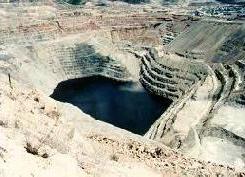

|
|
We have participated in various compliance processes. Compliance actions noted here were conducted, and the associated plans have been prepared and reviewed, with oversight from USEPA pursuant to CERCLA and the Clean Water Act.
To achieve compliance, the plan required the use of acid buffering materials for reclamation and remediation. Our work contributed to locating, characterizing, and segregating these materials. A qualitative predictive approach employed site reconnaissance, detailed geologic mapping and characterization, static testing, and various leachate extraction testing techniques.
As a result of this study the proposed mine waste segregation program incorporated specialized materials handling techniques necessary for limiting impacts to surface and ground water quality.
Our personnel, working with the State of Montana, edited and provided recommendations for changes to the draft Record of Decision (ROD) issued for the Butte Mine Flooding Operable Unit in the Butte Addition to the Silver Bow Creek / Butte Area National Priority List Site (Figure 10). The ROD addressed water-related issues associated with flooding the historical underground mine workings and the Berkeley Pit.

Figure 10. Berkeley Pit and pit lake
We recommended that the alternatives assessed for water treatment had not been fully investigated and that additional, less costly alternatives should be studied.
We assisted in the review and revision of water treatment plans brought forward by Montana Resources, current operators of the active minesite at Butte. These plans were submitted in response to a regulatory request to update the operations and reclamation plans for the active mine area.
We recommended a water treatment plan, not addressed in the original Remedial Investigation / Feasibility Study, that would provide for chemical neutralization of water inside the Berkeley Pit by the addition of lime kiln dust. This would increase the pH of the pit water and precipitate metals in situ as required by statute.
